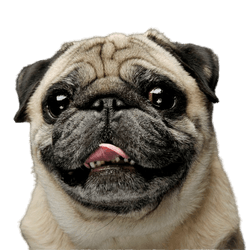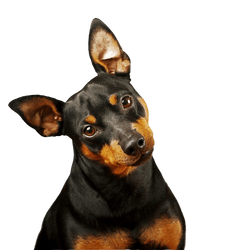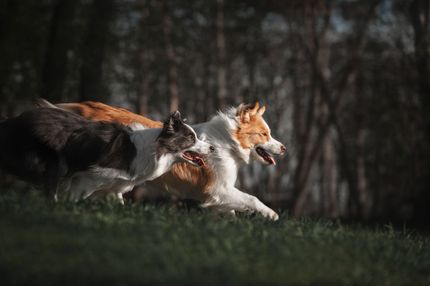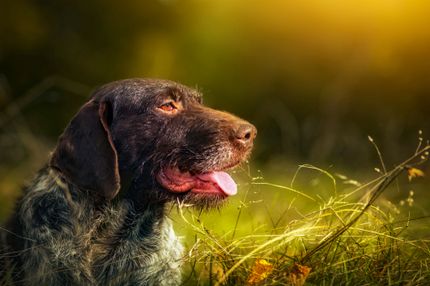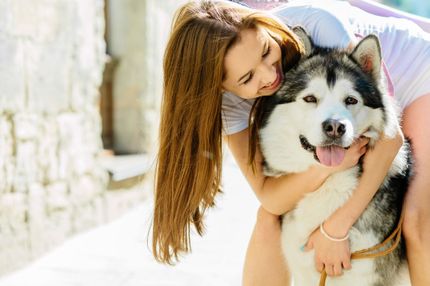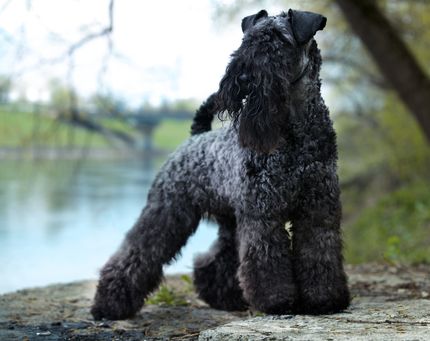Facts & Origin
Miniature Pinscher and Pug in one
The Muggin is a so-called designer or hybrid breed that was created by deliberately crossing a Pug with a Miniature Pinscher . The aim of this cross was to combine the playful, people-friendly nature of the Pug with the alert, energetic personality of the Miniature Pinscher.
This cross was developed primarily in the USA in response to the growing interest in small crossbreeds that combine certain character traits and are characterized by a striking, endearing appearance. The Muggin is said to be a compact, lively and affectionate companion dog, suitable for both families and individuals.
Criticism of the Muggin
As with many designer dogs, the Muggin has been criticized, especially in animal welfare circles. As the Muggin is not an officially recognized breed, there are no set standards for health, appearance or behaviour. This means that the puppies in a litter can vary greatly - both in terms of temperament and physical characteristics.
Another point of criticism relates to health problems: the Pug breed brings with it breathing problems, skin fold inflammation and eye problems, which - depending on their severity - can also be found in the Muggin. Although attempts are made to reduce these problems by crossing them with the slimmer, short-snouted Miniature Pinscher, this is not always successful.
In addition, many of these dogs are bred in uncontrolled kennels where neither health checks nor temperament tests are carried out on the parents. They are often marketed under cute names, with long-term responsibility for the animal taking a back seat.
Suitability of the Muggin
Despite justified criticism, the Muggin can be an excellent companion dog if bred well and lovingly kept. It is particularly suitable for active individuals, couples or families with older children who are looking for a small but lively dog with a strong character.
Muggins are usually affectionate, playful and alert, although their temperament depends heavily on their genetic distribution. They often inherit affection, calmness and adaptability from the Pug, and attention, energy and a certain degree of stubbornness from the Miniature Pinscher.
They are generally intelligent and willing to learn, but need clear guidance and early socialization to avoid becoming over-excited or stubborn. The Muggin is well suited to living in an apartment, but needs daily exercise and activity to stay balanced.
If you decide to get a Muggin, you should be prepared to deal with the individual needs of this lively small dog mix - then you will get a loyal, active and entertaining little companion.
| Alternate Name | Pug-Pin, Pinscher-Pug mix |
| Origin | China - Germany |
| Life expectancy | 12 - 15 years |
| Care requirements | low-maintenance |
| Activity level | low - average to high |
| FCI group | not recognised |
| AKC group | not recognised |
| KC group | not recognised |
More Pug mixes
More Dwarf Pinscher mixes
Attitude, character and temperament of the breed
Possible character traits of the Muggin
The Muggin is usually a lively, curious and affectionate little dog. It often combines the friendly, playful nature of the Pug with the alert, spirited personality of the Miniature Pinscher - a combination that makes it an attentive, clever companion with a strong character.
Many Muggins are people-oriented and show a strong bond with their caregiver. They love to be the center of attention and enjoy affection and closeness. At the same time, depending on their disposition, they also have a certain independence and stubbornness, especially if the Min Pin trait is more pronounced.
With the right training, Muggins are easy to manage and are usually intelligent, eager to learn and play. Their temperament can range from rather calm and cozy to active and energetic - this depends greatly on the individual dog.
Early socialization, patience and a loving but consistent upbringing are important in order to raise a balanced, socially compatible dog.
Character
Usage
Possible diseases of the Muggin
As the Muggin comes from two genetically different breeds, inherited health problems can occur in both parents. Mixed breeds are not automatically healthier - the quality of the breeding is crucial.
Possible diseases in the Muggin:
Breathing problems (brachycephaly), when the pug's short snout becomes prominent
Eye diseases, e.g. dry eyes, corneal injuries or protruding eyes
Skin problems and inflammation of the wrinkles, especially if the Pug has a pronounced coat
Dental problems due to crowded teeth in small dogs
Patellar luxation - a common joint disorder in small breeds
Cardiovascular diseases, which can occur in both breeds of origin
Sensitivity to heat, especially with a short muzzle and dark coat color
Regular veterinary check-ups, the right amount of exercise, a healthy diet and grooming of coat, ears and teeth are essential to prevent disease.
What a Muggin can look like
The Muggin is a small, compact dog, usually with a shoulder height of between 25 and 35 centimetres and a weight of around 5 to 9 kilograms.
The build is often strong but athletic, with a straight back and well-muscled legs. The head shape is usually somewhere between the roundish pug muzzle and the more distinctive face of the Miniature Pinscher - which means that some Muggins have a shortened muzzle and others a medium-length muzzle.
The ears can be either erect or drooping, depending on the genetics. The eyes are often large, round and expressive. The coat is usually short and smooth, rarely of medium length, and requires little grooming - occasional brushing is usually sufficient.
Many coat color variations are possible: black, brown, beige, fawn or combinations with markings - often with typical characteristics of both breeds such as a dark mask or shiny shorthair.
Overall, the Muggin has the appearance of a small, alert personality that combines joie de vivre, wit and affection - with an expressive look and a big heart on a small body.
Known Diseases
Hip dysplasia (HD)
Hip dysplasia (HD) is a genetic condition in dogs where the hip joint is not shaped properly. This leads to pain, stiffness and restricted movement.
Denture malocclusions
Malocclusions of the dentition often occur in dogs with short muzzles.
Shortness of breath
Difficult breathing can be recognized by the dog's rattling and sometimes accelerated breathing rate.
Overweight
Often, unfortunately, the dogs very much under excess weight. But the dogs themselves are never to blame!
Heart disease
Can occur frequently in dogs and can sometimes be treated with medication.
Breathing problems
Dogs with shortened muzzles can often experience respiratory problems.
Nervousness
Very often, unfortunately, small and thin breed suffering from permanent nervousness.
Permanent tremor
Persistent tremors can be very common in small breeds, and are often psychological.
FAQ
-
Of course, this varies from dog to dog, but these dogs are often small and compact with the typical pug mask on their face.
-
A Muggin is a small dog that usually reaches a shoulder height of 25 to 35 cm and weighs around 5 to 9 kilograms. Its build is usually compact and muscular, with a lively expression.
-
Possible illnesses include breathing problems (with a short muzzle), dental problems, patellar luxation (kneecap problems), eye diseases and skin irritation with a strong pug character. Responsible breeding and regular veterinary check-ups are important to prevent problems.
-
Miniature Pinscher Pugs seem to get on well with children. However, the most important thing is to pay attention to the individual character and never leave dogs unsupervised with a small child.
-
The grooming requirements are usually moderate. The short coat usually only requires occasional brushing. However, regular dental checks, eye and ear care and an appropriate diet are important. Muggins with sensitive skin should also use suitable grooming products.
